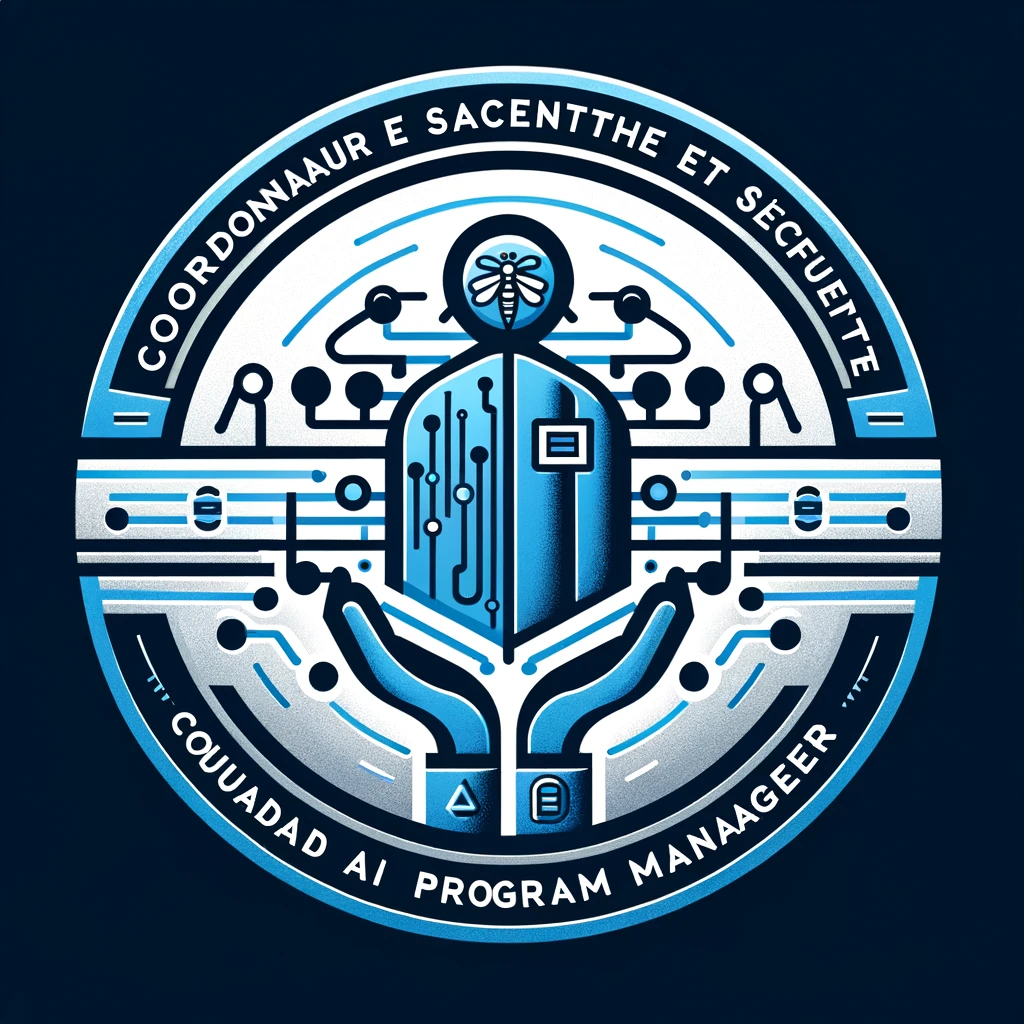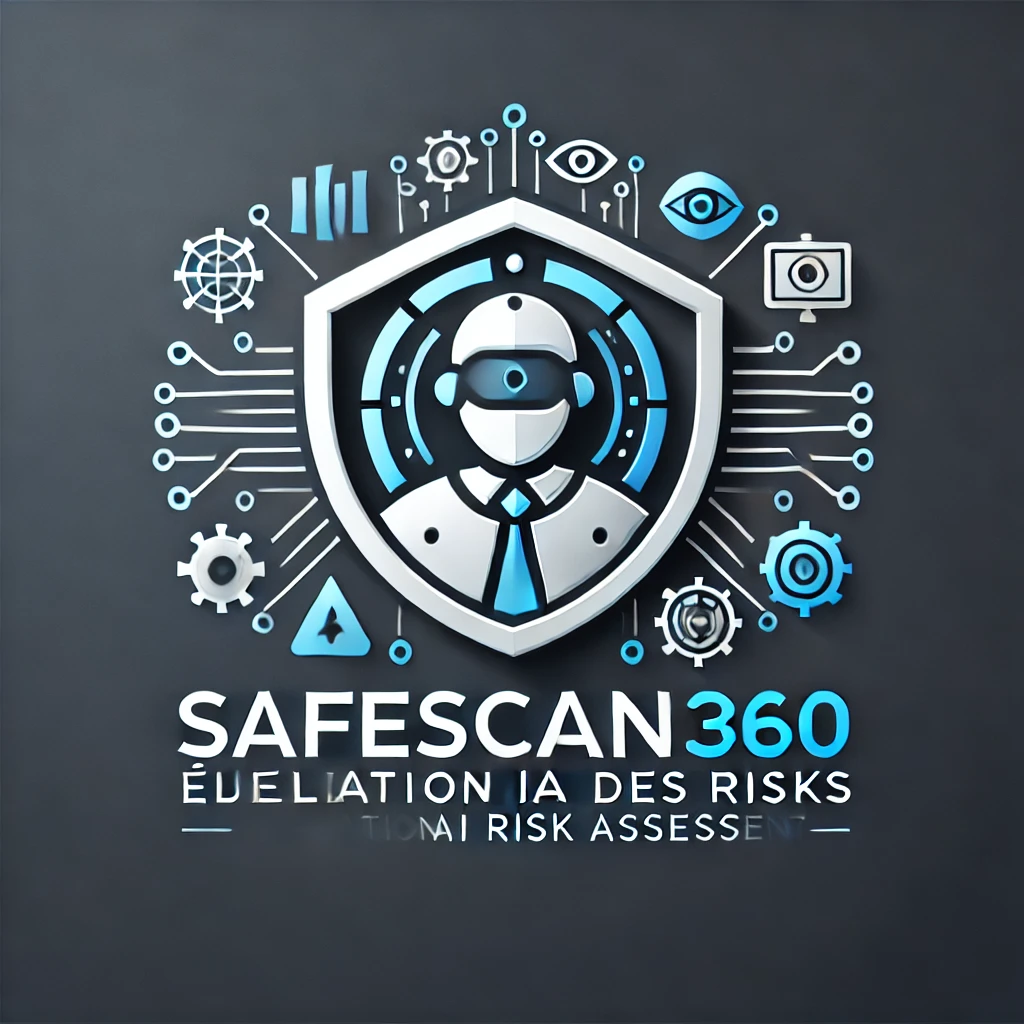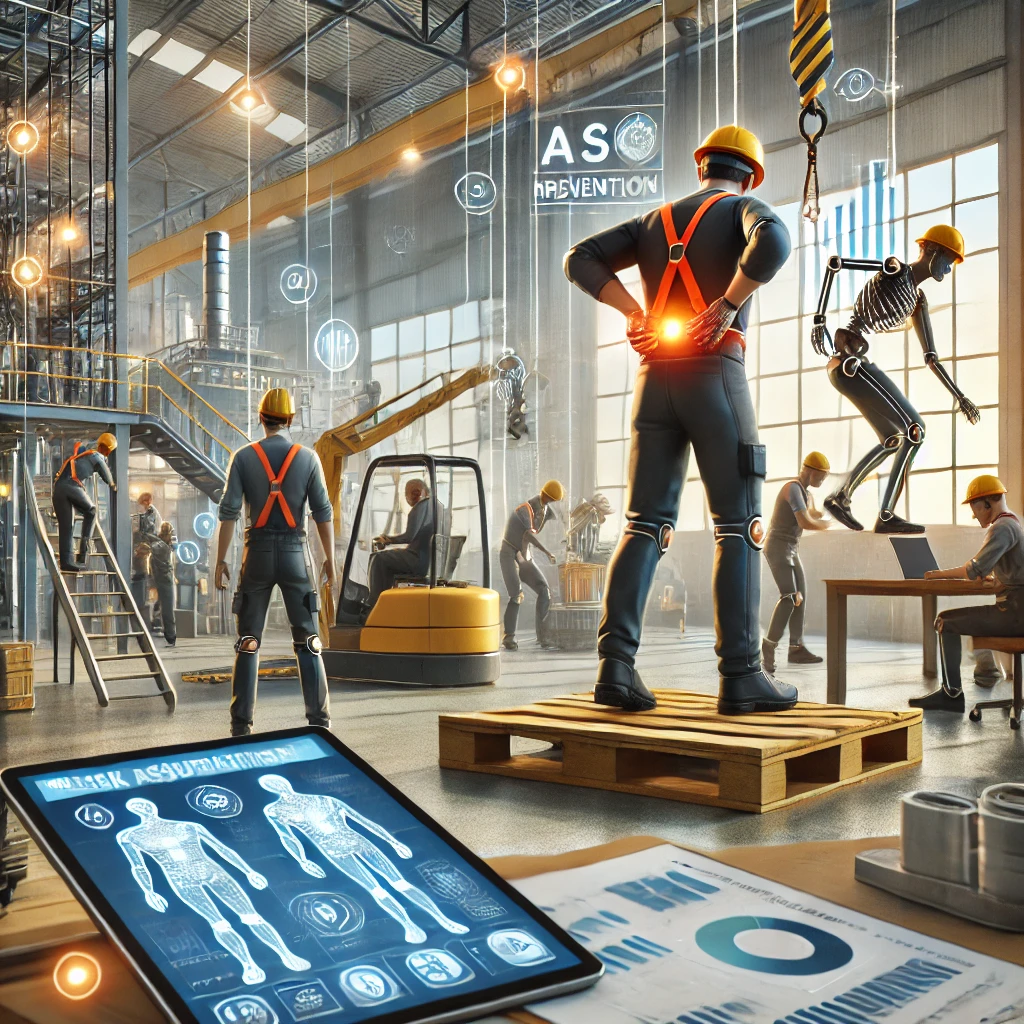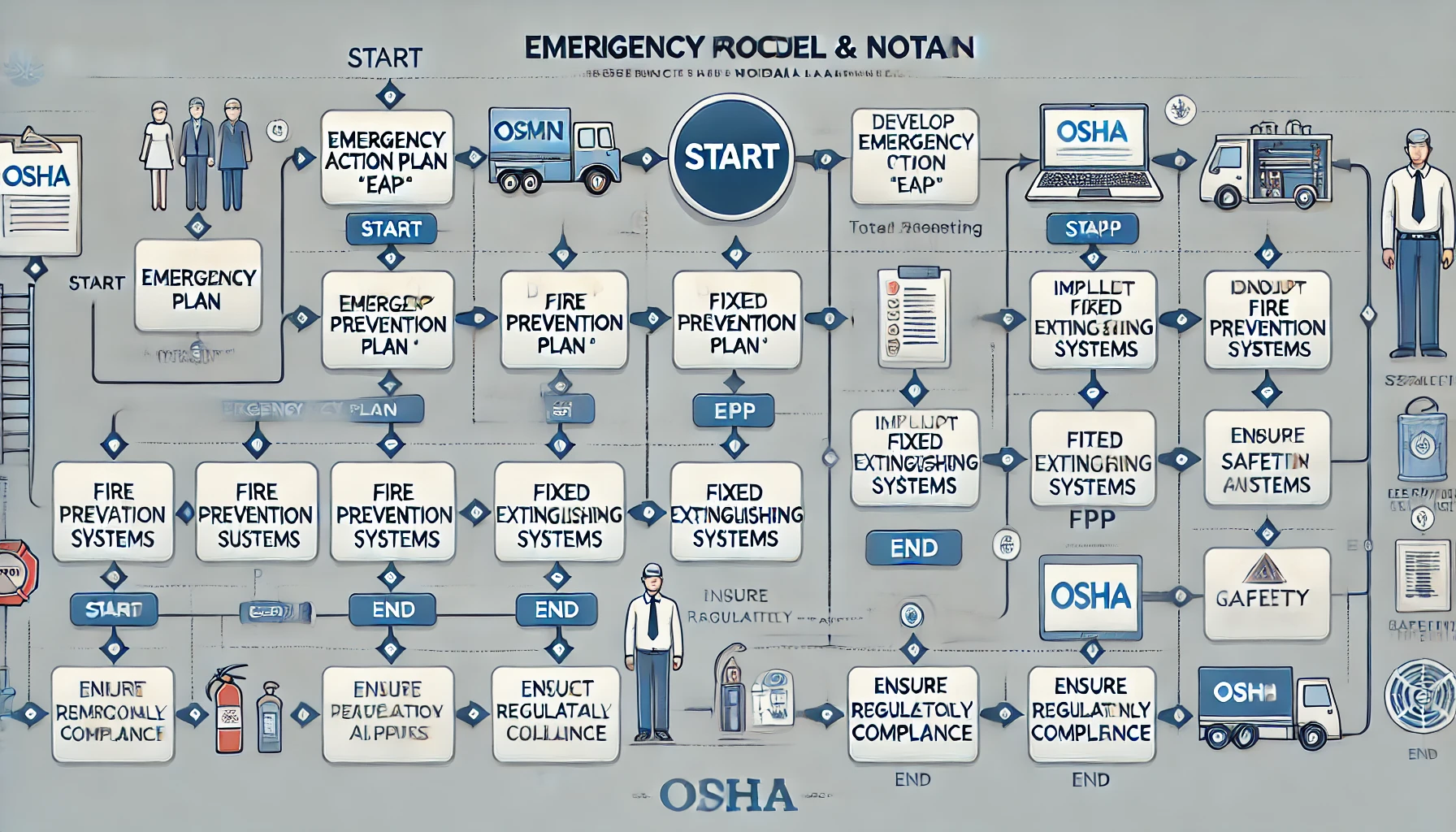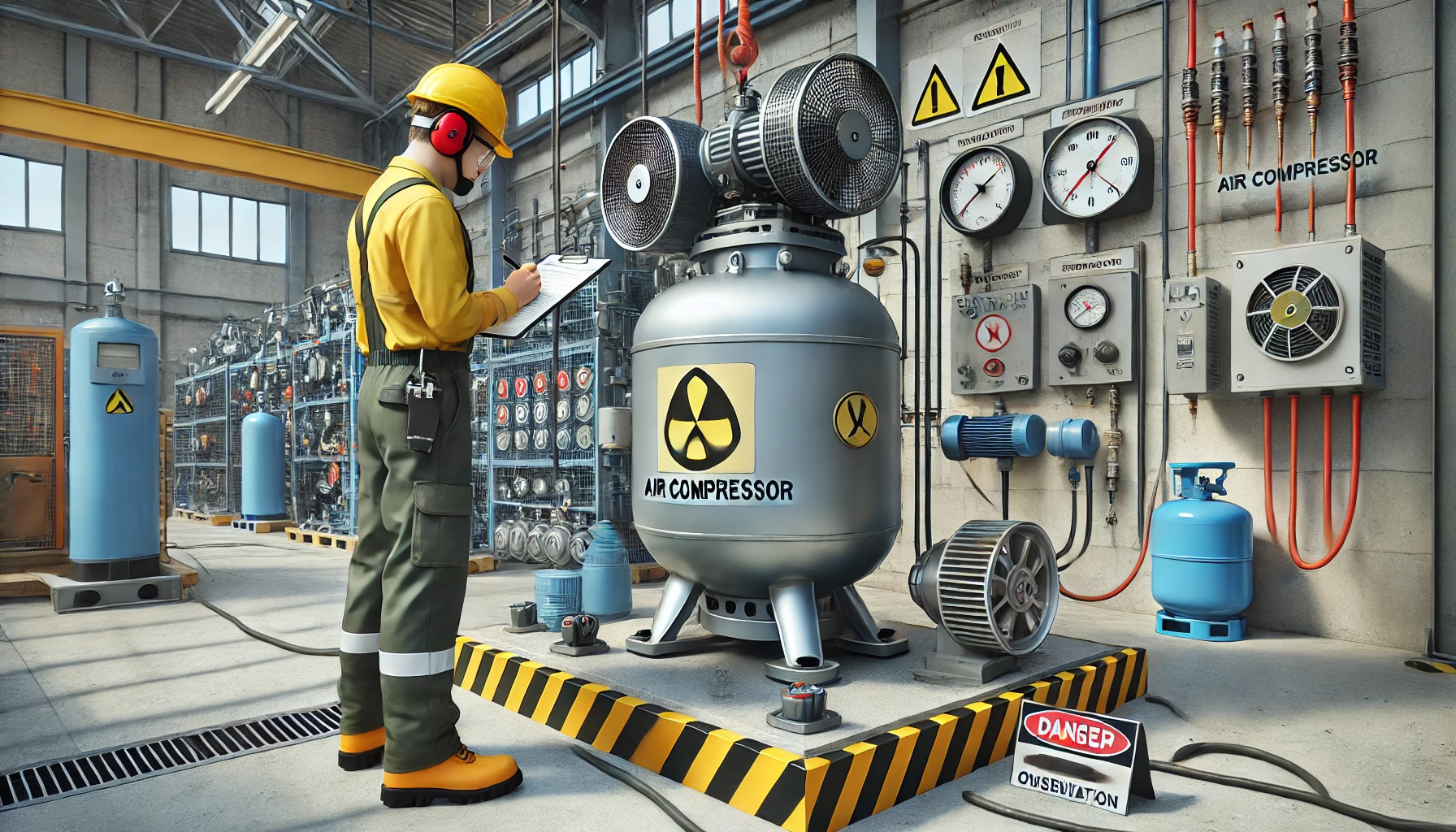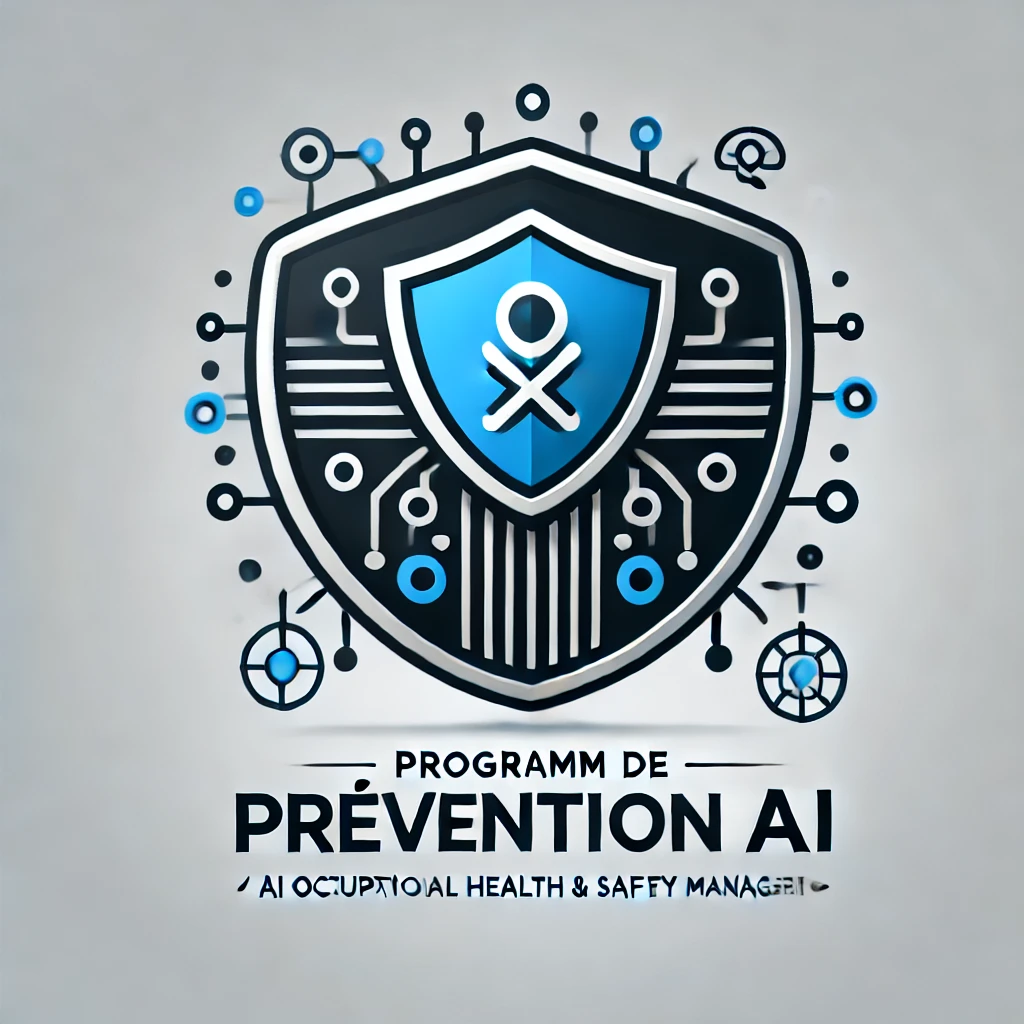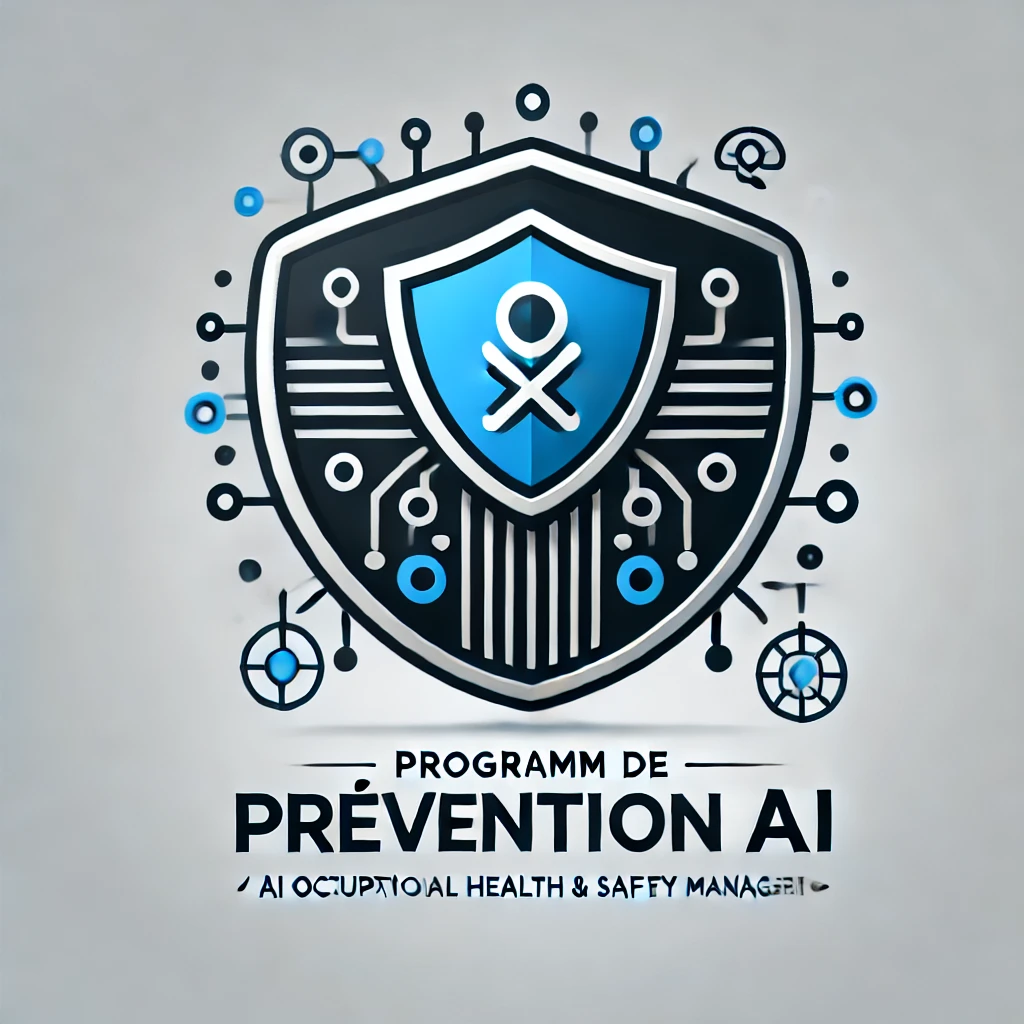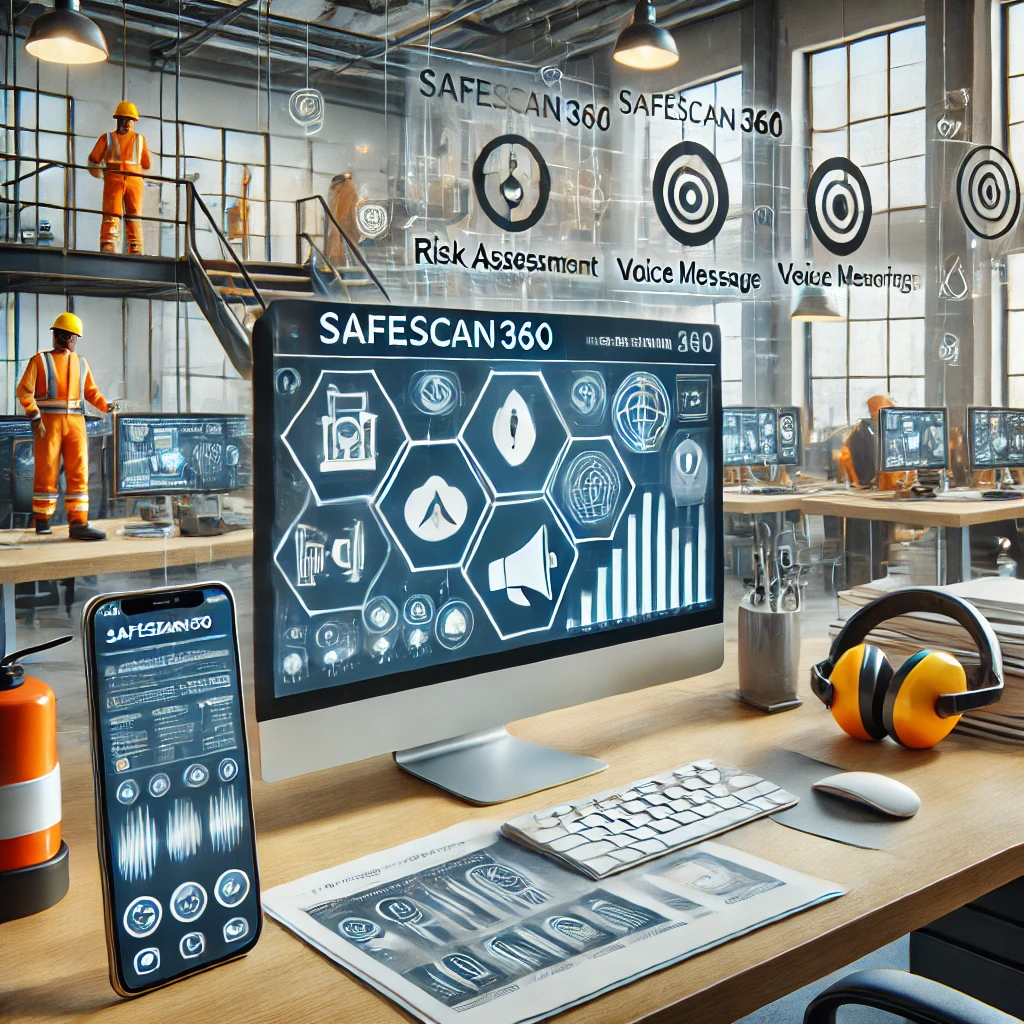

Welcome to GenAISafety, the leader in AI-powered workplace safety.
Emerging Use Cases in Applied Artificial Intelligence for Health and Safety at Work
Here’s how the company is redefining industry standards through emerging use cases of artificial intelligence applied to occupational health and safety
This document introduces GenAISafety, a company specializing in artificial intelligence solutions to enhance workplace safety. It aims to reduce workplace accidents by 95% within five years by offering practical applications across various industries such as construction and manufacturing. The text highlights several use cases, including predictive risk detection, accident management, employee training through simulations, and optimization of personal protective equipment (PPE), all while ensuring compliance with local and international regulations. The focus is on leveraging AI to automate prevention and analysis tasks, thereby increasing efficiency and workplace safety.
Discover how GenAISafety is poised to revolutionize safety and risk management in demanding industries such as construction and manufacturing. Our bold objective: to become the first artificial intelligence solution capable of reducing workplace accidents by 95% within the next five years, while ensuring full compliance with local and international regulations, including the strictest safety standards

Here are some documented use cases of AI for Occupational Health and Safety (OHS) in various industrial sectors:
🏭 Manufacturing:
Early detection of mechanical risks through connected sensors and AI-powered predictive models, reducing equipment-related incidents.
🔧 Construction:
Real-time analysis of construction sites to prevent falls and accidents related to dynamic working conditions.
🚛 Transport and Logistics:
Optimization of routes and proactive monitoring to prevent accidents on the road or in warehouses.

Use Cases of GenAISafety in the Construction Industry
Health and Safety Coordinator (HSC) in construction, in accordance with Quebec legislation (Article 215.2 of the Occupational Health and Safety Act - LSST) and the Regulation on Site-Specific Prevention Mechanisms (RMPPCC).
Use Cases of GenAISafety in the Construction Industry
Automatic Risk Identification in Photos:
Computer Vision for Hazard Detection (in compliance with Article 49 of the LSST on visible hazards).
Use Cases of GenAISafety in the Construction Industry
Automatic Risk Identification in Photos
🛠️ Computer Vision for Hazard Detection
(In compliance with Article 49 of the LSST on visible hazards)
Use Cases of GenAISafety in the Manufacturing Industry
Prevention of Musculo Skelettal Disorders (MSD)
MANUFACTURING INDUSTRY - OSHA
MANUFACTURING INDUSTRY - OSHA - AI Tool for Emergency Action Plan
MANUFACTURING INDUSTRY - OSHA
Manufacturing Industry. Inspection - Air Compressor

The Act to Modernize the Occupational Health and Safety Regime (LMRSST), enacted in October 2021
Automation of the Prevention Program (PP) Development
Under the LMRSST, employers on construction sites with more than 10 workers are required to develop a Prevention Program (PP). This program must include:
-
Risk identification
-
Preventive measures
-
Actions to be undertaken
Crafting this document can be complex, requiring a thorough understanding of the specific risks associated with each site.
How GenAISafety Facilitates PP Automation: 🔹 Risk Mapping with AI: Automated identification of site-specific hazards through data analysis and visual inspection (using computer vision). 🔹 Customized Preventive Measures: The system recommends tailored preventive actions based on site conditions and historical data. 🔹 Dynamic Document Generation: GenAISafety generates comprehensive, ready-to-use Prevention Programs that evolve as new risks are detected throughout the project. 🔹 Regulatory Compliance: Ensures alignment with LMRSST requirements, reducing administrative burden and minimizing the risk of non-compliance. 🔹 Continuous Monitoring and Updates: The PP is continuously updated as conditions change or new hazards emerge, ensuring up-to-date documentation. By automating the creation of Prevention Programs, GenAISafety empowers employers to focus on implementation and worker safety, streamlining administrative processes and reinforcing a proactive safety culture.
The Act to Modernize the Occupational Health and Safety Regime (LMRSST), enacted in October 2021
Proactive Monitoring and Real-Time Updates of the Prevention Program (PP)
The LMRSST mandates that the Prevention Program (PP) be regularly updated to reflect changing conditions on the construction site. Work environments evolve rapidly, with new risks emerging as the project progresses.
How GenAISafety Ensures Real-Time PP Updates: 🔹 Continuous Risk Monitoring: GenAISafety uses IoT sensors, drones, and computer vision to continuously scan the site for potential hazards. This data is analyzed in real time to detect deviations from the initial risk assessment. 🔹 Dynamic PP Adjustments: When new risks are identified, the Prevention Program is automatically updated to include: New risk descriptions Updated preventive measures Revised action plans 🔹 Immediate Alerts and Reports: Supervisors and health and safety coordinators (HSC) receive instant notifications when significant risks are detected, ensuring rapid intervention and mitigation. 🔹 Traceable and Compliant: All updates are logged, creating a digital trail that simplifies audits and demonstrates compliance with LMRSST requirements. 🔹 Worker Involvement and Feedback Loop: Workers can report hazards through mobile interfaces, contributing directly to the dynamic update process. This collaborative approach ensures that frontline observations are integrated into the PP in real time. By automating and proactively managing Prevention Program updates, GenAISafety helps employers stay ahead of risks, fostering a safer, more responsive work environment that complies with evolving regulations.
Worker Engagement in Risk Assessment
Context:
The LMRSST emphasizes the active participation of workers in prevention mechanisms, including their involvement in risk identification and proposing solutions. Facilitating this participation enhances the relevance and adherence to safety programs.
How GenAISafety Facilitates Worker Engagement: 🔹 Interactive Risk Reporting Platforms: Workers can report hazards directly through mobile apps or digital kiosks on-site. This streamlined process allows real-time submission of photos, videos, and descriptions of potential risks. 🔹 AI-Powered Risk Validation: GenAISafety cross-references worker reports with data from IoT sensors and computer vision systems to validate and prioritize risks. This ensures that no observation is overlooked, reinforcing worker trust and engagement. 🔹 Collaborative Risk Workshops: The platform facilitates digital collaboration sessions where workers and supervisors can collectively review identified risks and brainstorm preventive measures. This fosters a culture of shared responsibility and strengthens safety awareness. 🔹 Recognition and Feedback Loop: GenAISafety tracks worker contributions and provides feedback and recognition for their involvement in risk prevention. Workers receive updates on how their reports influenced safety measures, promoting continuous engagement. 🔹 Training and Awareness: Workers receive tailored safety training based on site-specific risks identified through their participation, ensuring they are well-equipped to handle emerging challenges. By integrating workers into the risk assessment process, GenAISafety not only enhances compliance with LMRSST but also cultivates a proactive safety culture, ultimately reducing incidents and fostering a safer work environment.
Risk Simulations for Worker Training
Context:
Under the new obligations of the LMRSST, workers must undergo continuous training to effectively identify and prevent risks on construction sites. Employers are responsible for ensuring that workers are adequately trained in the safety practices outlined in the Prevention Program (PP).
Context: Under the new obligations of the LMRSST, workers must undergo continuous training to effectively identify and prevent risks on construction sites. Employers are responsible for ensuring that workers are adequately trained in the safety practices outlined in the Prevention Program (PP). How GenAISafety Enhances Worker Training Through Risk Simulations: 🔹 Immersive Virtual Simulations (VR/AR): GenAISafety leverages Virtual Reality (VR) and Augmented Reality (AR) to create realistic risk scenarios that replicate hazardous situations on construction sites. Workers can interact with these simulations, gaining hands-on experience in identifying and mitigating risks. 🔹 Dynamic Scenario Generation: The AI engine generates simulations based on real site conditions, past incidents, and evolving project phases. This ensures that training reflects the current and potential risks specific to the site. 🔹 Adaptive Learning Paths: Training modules are tailored to the worker’s role, experience level, and the unique hazards of their work environment. GenAISafety tracks progress and adapts future simulations based on performance and feedback. 🔹 Incident Response Drills: Simulations also include emergency response scenarios, teaching workers how to react during accidents, equipment failures, or environmental hazards. This improves readiness and reduces response times during actual incidents. 🔹 Performance Monitoring and Certification: GenAISafety assesses worker performance within the simulations and provides certification upon successful completion. Employers can track participation and compliance, ensuring alignment with LMRSST regulations. Benefits: ✅ Increased Retention: Immersive simulations improve knowledge retention compared to traditional classroom training. ✅ Risk-Free Environment: Workers can learn from mistakes without real-world consequences. ✅ Regulatory Compliance: Ensures workers are consistently trained, meeting the LMRSST’s ongoing education requirements. ✅ Engagement and Motivation: Interactive simulations foster greater engagement and involvement in safety protocols. By integrating risk simulations into worker training, GenAISafety helps employers build a competent, risk-aware workforce, reinforcing safety culture and ensuring compliance with Quebec’s occupational health and safety laws.
Predictive Risk Analysis for Multi-Worker Construction Sites
Context:
The LMRSST requires that construction sites with at least 10 workers implement a rigorous prevention program, accounting for the presence of multiple trades. This significantly complicates the identification of cross-disciplinary risks arising from overlapping tasks and responsibilities.
How GenAISafety Facilitates Predictive Risk Analysis: 🔹 Cross-Team Interaction Analysis: GenAISafety uses real-time and historical data to analyze interactions between various teams on-site. The system identifies potential hazards linked to: Collisions between machinery and workers. Falls from overlapping work zones (e.g., scaffolding above active areas). Equipment misuse due to unclear role demarcations or overlapping tasks. 🔹 Real-Time Hazard Prediction: AI algorithms continuously assess evolving site conditions, flagging risk-prone zones and forecasting potential incidents based on current workflows and worker locations. 🔹 Automated Risk Recommendations: When risks are detected, GenAISafety generates specific recommendations to mitigate cross-disciplinary hazards. This could include: Scheduling adjustments to prevent trade overlap. Redesigning workflows to minimize interaction in high-risk areas. Enhanced safety protocols for overlapping tasks. 🔹 Dynamic Prevention Program Updates: All identified risks and recommended mitigations are automatically integrated into the Prevention Program (PP), ensuring that the document remains current and comprehensive as site conditions change. 🔹 Incident Forecasting: The system leverages machine learning to predict the likelihood of future incidents based on past near-miss data and site activity patterns, enabling proactive intervention. Benefits: ✅ Holistic Risk Visibility: Provides a comprehensive view of how different trades interact and where potential conflicts may arise. ✅ Accident Reduction: By identifying and addressing cross-team hazards early, GenAISafety helps reduce accidents related to task overlap. ✅ Regulatory Compliance: Ensures compliance with LMRSST requirements for multi-worker sites by maintaining an up-to-date and responsive Prevention Program. ✅ Operational Efficiency: Optimizes scheduling and resource allocation to minimize downtime and improve workflow safety. With GenAISafety, employers can anticipate and manage cross-disciplinary risks, fostering safer, more efficient construction sites that comply with Quebec’s occupational health and safety regulations.
Automated Selection of Protective Gloves for Construction Sites
Context:
On construction sites in Quebec, workers face various risks, including cuts, impacts, and handling hot materials. Article 51 of the LSST mandates employers to provide appropriate personal protective equipment (PPE), while Article 62 requires strict monitoring of their usage. Gloves are critical PPE for protecting workers' hands from mechanical, thermal, and chemical injuries.
Proposed Solution – GenAISafety Glove Selector: The GenAISafety Glove Selector is an advanced AI-powered tool that analyzes the specific risks of a site and automatically recommends the appropriate gloves. It identifies tasks performed on-site and suggests gloves tailored to each risk, ensuring compliance with regulations. Process Steps: 1. Task and Risk Analysis: The GenAISafety Glove Selector draws from a comprehensive database of construction tasks (e.g., handling sharp materials, operating heavy machinery, or working near heat sources). It identifies specific hazards associated with each task, such as: Cuts Impacts Burns 2. Glove Recommendation for Each Risk: For every identified risk, the AI recommends the most suitable gloves. Examples include: Handling Sharp Materials (e.g., sheet metal, cutting tools): Recommends cut-resistant gloves made of Kevlar or similar materials. Gloves comply with EN 388 standards for mechanical protection. Operating Heavy Machinery: Suggests impact-resistant gloves with reinforced padding. Aligned with ANSI/ISEA 105-2016 recommendations. Working Near Heat Sources (e.g., welding or hot material handling): Selects heat-resistant gloves that meet NFPA thermal protection standards. 3. Customization Based on Site Needs: The tool personalizes glove recommendations based on site-specific conditions such as: Risk exposure frequency Task duration Worker preferences (e.g., hypoallergenic gloves for latex allergies) For chemical or biological hazards, nitrile gloves are recommended to avoid allergic reactions, ensuring worker comfort and safety. 4. Monitoring Glove Usage (Compliance with Article 62 of LSST): In addition to recommending gloves, the GenAISafety-PPETracker monitors PPE usage in real-time, ensuring continuous protection. 🔹 Key Features: Real-Time Verification: Confirms that workers wear the appropriate gloves for their assigned tasks. Non-Compliance Alerts: Supervisors receive notifications if incorrect or worn-out gloves are detected. Regular Inspections and Replacement: Automates glove inspections and recommends replacements to maintain PPE effectiveness. Benefits: ✅ Enhanced Worker Safety: Minimizes hand injuries through precise PPE recommendations. ✅ Regulatory Compliance: Ensures alignment with Articles 51 and 62 of the LSST. ✅ Operational Efficiency: Reduces downtime by automating glove selection and replacement processes. ✅ Worker Comfort: Personalizes glove selection, improving comfort and adherence to PPE protocols. By integrating GenAISafety Glove Selector and PPETracker, construction sites foster proactive risk management and continuous safety improvements, safeguarding workers while complying with Quebec’s occupational health and safety regulations.
Cas d’usage documentés en IA pour la SST (Sécurité et Santé au Travail)
01.
IA et gestion des risques (LSST Articles 51, 52, 61)
Cas 1-10 : Analyse prédictive des risques Les modèles GenAISafety peuvent analyser les données historiques d’accidents de travail pour identifier des modèles et tendances. Cela permet de prédire les futurs risques dans des secteurs comme la construction et la logistique, ce qui aide les employeurs à mieux respecter l’article 51 de la LSST sur l’élimination des risques. Modèle IA spécifique : GenAISafety-Predictive. Cas 11-15 : Génération de scénarios de risques L’IA générative crée des scénarios hypothétiques basés sur des conditions de travail existantes, ce qui permet aux gestionnaires de simuler des situations à risque avant qu'elles ne se produisent. Cela renforce les stratégies de prévention imposées par l'article 52 de la LSST. Modèle IA spécifique : GenAISafety-Simulate. Cas 16-20 : Simulation d’environnements de travail Les modèles de simulation générative peuvent recréer virtuellement des environnements de travail pour identifier les zones dangereuses avant qu’elles ne causent des accidents. Ce soutien à l’inspection respecte l'article 61 de la LSST sur les obligations de prévention. Modèle IA spécifique : GenAISafety-EnviroSim.
02.
IA et gestion des accidents (LSST Articles 49, 62)
Cas 31-35 : Automatisation des rapports d’accidents Les modèles d’IA générative peuvent rédiger automatiquement des rapports détaillés sur les accidents du travail à partir de données d'entrée (comme des vidéos ou des images), en conformité avec l'article 62 de la LSST qui oblige à documenter les incidents. Modèle IA spécifique : GenAISafety-ReportGen. Cas 36-40 : Analyse des causes d’accidents L'IA peut analyser les causes d'accidents en comparant les données de plusieurs incidents passés, afin d'émettre des recommandations d'amélioration. Cela soutient les enquêtes prévues par l'article 49 de la LSST. Modèle IA spécifique : GenAISafety-AccidentInvestigator.
03.
IA et formation en SST (LSST Articles 59, 51)
Cas 51-55 : Simulateurs de formation GenAISafety permet de créer des simulations immersives pour former les employés à la manipulation d’équipements lourds, conforme à l'obligation de formation imposée par l'article 59 de la LSST. Modèle IA spécifique : GenAISafety-TrainingSim. Cas 56-60 : Création de scénarios d’urgence L’IA générative peut modéliser des scénarios de gestion d'urgence pour former les employés à réagir rapidement et efficacement lors d’incidents graves, en respect des responsabilités énoncées dans l'article 51 de la LSST. Modèle IA spécifique : GenAISafety-EmergencyTrainer.
04.
IA et IA et conformité aux normes de sécurité (LSST Articles 1, 9) (LSST Articles 51, 52)
Cas 61-65 : Automatisation des inspections de sécurité GenAISafety peut être utilisé pour automatiser les inspections de chantier en identifiant les écarts de conformité en temps réel, contribuant au respect du CSTC et des normes SST. Modèle IA spécifique : GenAISafety-Inspector. Cas 66-70 : Analyse des rapports d’inspection Les données collectées lors des inspections peuvent être analysées par IA pour détecter des écarts fréquents et suggérer des actions correctives. Cela aide à aligner les entreprises sur l'article 9 de la LSST. Modèle IA spécifique : GenAISafety-ComplianceAnalyzer.
05.
IA et optimisation des EPI (LSST Articles 51, 62)
Cas 71-75 : Suggérer les EPI en fonction des risques Les algorithmes d'IA peuvent recommander automatiquement les équipements de protection individuelle (EPI) adaptés aux risques spécifiques de chaque tâche, conformément à l'article 51 de la LSST sur la fourniture d'EPI appropriés. Modèle IA spécifique : GenAISafety-PPEAdvisor. Cas 76-80 : Suivi de l'utilisation des EPI L'IA peut suivre l’utilisation des EPI par les travailleurs et alerter en cas de non-conformité, en lien avec l'article 62 de la LSST. Modèle IA spécifique : GenAISafety-PPETracker.
